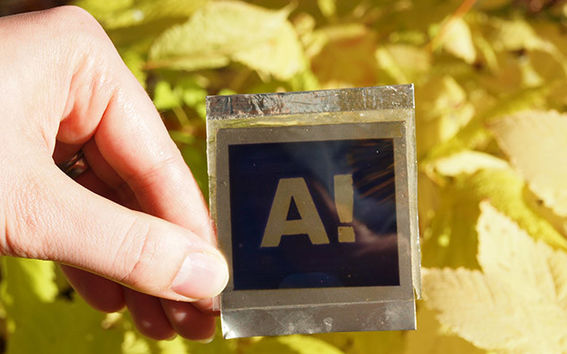Challenges for mass-production of flexible solar cells: durability and environmental impact

If scientists’ dreams came true, everyday items such as mobile devices, clothing and vehicles would be equipped with flexible solar cells. A recent review article by researchers of Aalto University and University of Montreal reports on recent developments in the commercialisation and mass production of flexible dye solar cells as well as highlights remaining challenges. The applicability for large-scale mass production, encapsulation of the cells, their durability, and their environmental net impact are among key issues discussed.
A key requirement for flexible solar cell technologies to be viable at industrial scale is that all components of the cells should lend themselves to roll-to-roll production. Recent development of, for instance, ink-jet printing is promising in this respect as it allows precise insertion of the dye and electrolyte components.
The encapsulation of a flexible cell poses a major challenge to manufacture. If encapsulation is insufficient, the liquid electrolyte can leak out of the cell or let impurities leak inside, which could considerably reduce the lifetime of the device. New innovations are required for joining the substrates together, since conventional approaches, such as glass-frit used in rigid devices, are unsuitable for flexible cells.
‘A prerequisite for commercialization is making the lifetime of devices adequate. Flexible solar cells are usually made on metals or plastics, and both come with perils: a metal may corrode, and plastics may allow water and other impurities to permeate,’ explains Academy Research Fellow Kati Miettunen from Aalto University in Finland.
A future goal is the development of more stable options for flexible substrates, that would preferably come with a cheaper price and lesser environmental impact. New discoveries using biomaterials or a hybrid material with wood pulp as substrates for the cells could pave the way forward.
Further information:
Kati Miettunen
Academy Research Fellow, Project Manager
Aalto University
[email protected]
tel. +358 50 3441729
- Published:
- Updated:
Read more news

Get to know us: Associate Professor Maria Sammalkorpi
Sammalkorpi received her doctorate from Helsinki University of Technology 2004. After her defence, she has worked as a researcher at the Universities of Princeton, Yale and Aalto.
Aalto computer scientists in ICML 2024
Computer scientists in ICML 2024
Getting bacteria into line
Physicists use magnetic fields to manipulate bacterial behaviour